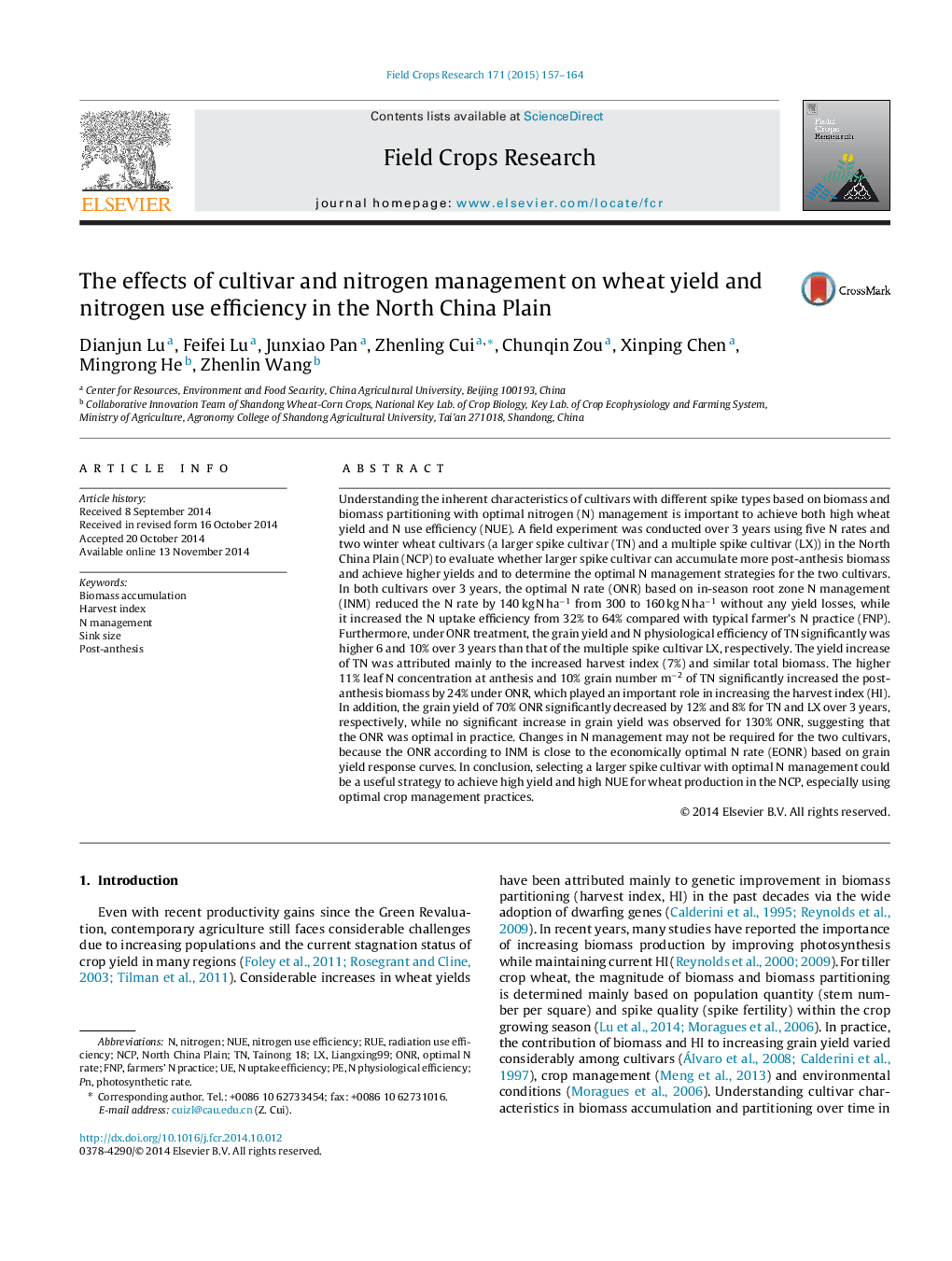| Article ID | Journal | Published Year | Pages | File Type |
|---|---|---|---|---|
| 6374957 | Field Crops Research | 2015 | 8 Pages |
Abstract
Understanding the inherent characteristics of cultivars with different spike types based on biomass and biomass partitioning with optimal nitrogen (N) management is important to achieve both high wheat yield and N use efficiency (NUE). A field experiment was conducted over 3 years using five N rates and two winter wheat cultivars (a larger spike cultivar (TN) and a multiple spike cultivar (LX)) in the North China Plain (NCP) to evaluate whether larger spike cultivar can accumulate more post-anthesis biomass and achieve higher yields and to determine the optimal N management strategies for the two cultivars. In both cultivars over 3 years, the optimal N rate (ONR) based on in-season root zone N management (INM) reduced the N rate by 140 kg N haâ1 from 300 to 160 kg N haâ1 without any yield losses, while it increased the N uptake efficiency from 32% to 64% compared with typical farmer's N practice (FNP). Furthermore, under ONR treatment, the grain yield and N physiological efficiency of TN significantly was higher 6 and 10% over 3 years than that of the multiple spike cultivar LX, respectively. The yield increase of TN was attributed mainly to the increased harvest index (7%) and similar total biomass. The higher 11% leaf N concentration at anthesis and 10% grain number mâ2 of TN significantly increased the post-anthesis biomass by 24% under ONR, which played an important role in increasing the harvest index (HI). In addition, the grain yield of 70% ONR significantly decreased by 12% and 8% for TN and LX over 3 years, respectively, while no significant increase in grain yield was observed for 130% ONR, suggesting that the ONR was optimal in practice. Changes in N management may not be required for the two cultivars, because the ONR according to INM is close to the economically optimal N rate (EONR) based on grain yield response curves. In conclusion, selecting a larger spike cultivar with optimal N management could be a useful strategy to achieve high yield and high NUE for wheat production in the NCP, especially using optimal crop management practices.
Keywords
Related Topics
Life Sciences
Agricultural and Biological Sciences
Agronomy and Crop Science
Authors
Dianjun Lu, Feifei Lu, Junxiao Pan, Zhenling Cui, Chunqin Zou, Xinping Chen, Mingrong He, Zhenlin Wang,
